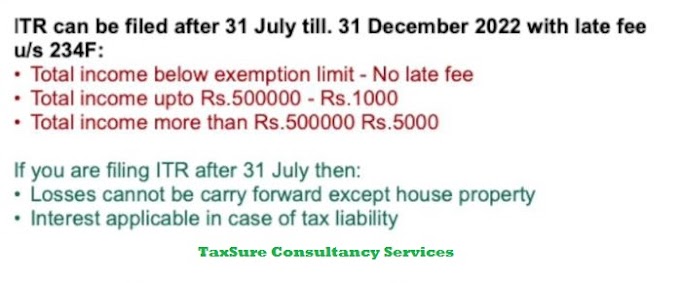To discourage cash payments, the Union Budget 2019 has introduced Section 194N for tax deduction at source (TDS) on cash withdrawals exceeding Rs 1 crore.
The Budget 2020 has reduced the threshold limit for TDS to Rs 20 lakh for taxpayers who have not filed their income tax returns for past three years.
TDS shall be deducted at prescribed rates if cash is withdrawn in excess of Rs 20 lakh during the financial year by the taxpayer.
Let’s discuss Section 194N in detail:
What is Section 194N?
Section 194N is applicable on more than Rs 1 crore cash withdrawals during a financial year. This section will apply to the withdrawal of all the sums of money or an aggregate of sums from a particular payer in a financial year. The section will apply to withdrawals made by any taxpayer, including:
- An individual
- A Hindu Undivided Family (HUF)
- A company
- A partnership firm or an LLP
- A local authority
- An Association of Person (AOPs) or Body of Individuals (BOIs)
- Any bank (private or public sector)
- A co-operative bank
- A post-office
How to calculate the threshold limit?
The payer shall deduct tax while making payment to any individual in cash from the individual’s bank account on the amount over Rs 1 crore.
The limit of Rs 1 crore in a financial year is with respect to per bank or post office account and not per the taxpayer’s account.
For example, if a person has three bank accounts with three different banks, he can withdraw cash of Rs 1 crore * 3 banks, i.e. Rs 3 crore without any TDS.
The cash withdrawal made by any taxpayer from the bank accounts maintained by such taxpayer (recipient) will only attract TDS under Section 194N.
For instance, if a bank makes a cash payment of more than Rs 1 crore in an FY to its account holder (i.e. any taxpayer) from the account maintained by such taxpayer, then the bank will have to deduct TDS.
In the case of a payment made by a taxpayer through a bearer cheque issued to a third party, over Rs 1 crore in a financial year, the recipient of the cash is not the account holder but a third party. In such a case, the payment is not made by the bank to the account holder. In the above situation, there is an ambiguity that whether such bearer cheque given to any person (like vendor) to collect payment from the bank will be covered under section 194N? Whether the bank is liable to deduct tax on the account holder’s funds in respect of the bearer cheque issued to a third party.
Separately, in the case of business payments, payment made through a bearer cheque would not be allowed as an expenditure under section 40(A)(3) of the Income Tax Act. Any payment made exceeding Rs 10,000 per day (in a single transaction or in aggregate) is not allowed as business expenditure.
The limit of Rs 1 crore will apply to the cash payments/withdrawals made during FY 2019-20. But the provisions of Section 194N will be applied to the payments made on or after 1 September 2019.
Why is Section 194N introduced?
To discourage cash transactions in the country and promote the digital economy, ‘Section 194N – TDS on cash withdrawals over and above Rs 1 crore’ has been introduced through the Finance Bill, 2019.
Who will deduct TDS under Section 194N?
The person (payer) making the cash payment will have to deduct TDS under Section 194N. Here is the list of such persons:
- Any bank (private or public sector)
- A co-operative bank
- A post office
There are certain categories of persons (payee) to whom the provision of this section will not apply. They are listed below:
- Any government body
- Any bank, including co-operative banks
- Any business correspondent of a banking company (including co-operative banks)
- Any white label ATM operator of any bank (including co-operative banks)
- Any other person notified by the government
What is the point of TDS under Section 194N?
The payer should deduct TDS while making the cash payment over and above Rs 1 crore in a financial year to the payee. If the payee withdraws a sum of money at regular intervals, the payer will have to deduct TDS from the amount once the total sum withdrawn exceeds Rs 1 crore in a financial year.
Further, the tax will be deducted on the amount exceeding Rs 1 crore.
For example, if a person withdraws Rs 99 lakh in aggregate in the financial year and next time, an amount of Rs 1,50,000 is withdrawn, the TDS liability is only on the excess amount of Rs 50,000.
Rate of TDS under Section 194N
The payer will have to deduct TDS at the rate of 2% on the cash payments/withdrawals of more than Rs 1 crore in a financial year under Section 194N.
Thus, in the above example, TDS would be on Rs 50,000 at 2%, i.e. Rs 1,000.
If the individual receiving the money has not filed an income tax return for three years immediately preceding the year, the tax deduction limit is reduced to Rs 20 lakh.
The TDS will be deducted at:
-2% on the cash payments/withdrawals of more than Rs 20 lakh and up to Rs 1 crore
-5% for withdrawal exceeding Rs 1 crore
Points to remember
- The recipient of cash cannot furnish Form No. 15G/15H to the bank and cannot apply for a lower deduction certificate u/s 197.
- While calculating three years immediately preceding the years, if the date of return u/s 139(1) has not expired, then that assessment year is not to be considered.
- Section 194N is applicable when an amount is withdrawn from one or more accounts maintained with the same bank.
- If there are multiple bank accounts, tax deduction limit shall be based on the individual banks.





0 Comments